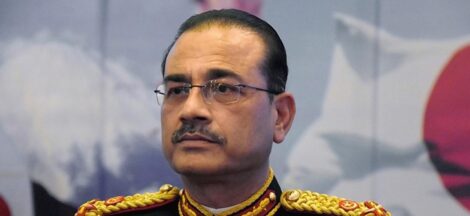By Dr. Gyan Pathak
As India heads towards General Election 2024, sharp rise in urban unemployment in December 2023 exposes again the falsehood of government’s narrative and propaganda regarding employment generation under the leadership of PM Narendra Modi.
Though under the new narrative on the employment front on the eve of Lok Sabha Election 2024, it is being said to convince the people that Modi government have been serious in providing jobs to the people, the data for December 2023 released by the Centre for Monitoring Indian Economy (CMIE) reveals that urban employment rate has increased from 9.31 per cent in November to 10.08 per cent in December.
Rural unemployment during this period fell from 8.68 per cent to 7.97 per cent, which was partially a result of increased activity in agricultural activities – both on account of reaping of Kharif, and sowing of Rabi leading to about 5.8 per cent of fall in demand for Mahatma Gandhi National Rural Employment Guarantee Act (MGNREGA). Obviously, it is a very temporary phenomenon that will soon change to push up unemployment rate again in the coming months when there would not be less agricultural works available.
PM Modi led government in the meantime is busy in spinning an attractive narrative on employment front by telling people that the government is very serious on providing jobs to the people. Employment fairs are being organised across the country and PM Modi himself have been distributing employment letters, however, people know these were nothing more the tokenism, while unemployment scenario remains grim.
Union Labour and Employment Minister Bhupender Yadav has now said that his ministry will soon be launching the “advanced version” of the National Career Service (NCS), namely NCS2.0 “to facilitate better job matching and search facility for jobseekers along with a recommendation engine for skilling by the use of latest technologies and leveraging Artificial Intelligence and Machine Learning.”
Furthering the government narrative on employment front, the Minister further tried to shift the entire responsibility of giving employment to the unemployed by saying that they would “persuade states to roll out labour reforms as part of efforts to further improve the ease of doing business and provide social security for the unorganised labour, particularly gig and platform workers in 2024. He also said that the NCS2.0 would be integrated with facilities of 28 state/Union Territories to develop a comprehensive pan-India network. It has also been integrated with various private portals like monster.com, Fresherworld and HireMee to have a listing of vacancies.
Superficially, the new narrative seems to be a good attempt at enticing the voters, particularly the unemployed, but not for those who know the reality for NCS project that was launched in July 2015 to provide various employment-related services, including career counselling, vocational guidance, information on skill development courses, apprenticeship and internships through the digital platform.
As of November 30, 2023, this platform had 3.64 crore jobseekers, 19.15 lakh employers, and vacancies of about 1.92 crore. Even in one month, the portal registered active vacancies of about 13.5 lakhs. It is also linked to Centre’s Skill India portal, Udyam Portal, MSME, e-shram, EPFO, ESIC, DigiLocker and so on.
What is the net result of all these programmes, and many others, in the employment front since 2014 under PM Narendra Modi’s rule? December 2023 ended with 8.65 per cent of unemployment rate, as per the CMIE data. Though, the Centre has asked us to not rely on any private data, the government does not provide the real time data, and hence we have no option but to pick up the CMIE data for a closer look on the labour market, in which labour participation rate (LPR) was only 41.88 per cent in December 2022. It means majority of workforce had no work. Female LPR also was merely 12.08 per cent.
PM Narendra Modi came to power in 2014, after an initial promise to provided 10 million jobs during election campaigns, but soon promised that every hand will be provided work with dignity, which was interpreted as 20 million as per the requirement of unemployed in the job market every year. However, the unemployment rate went up from 2.1 per cent in 2012 to 6.1 per cent in 2018, which was 45 years high.
The latest government PLFS quarterly bulleting released in November showed that unemployment rate in urban areas in during July-September 2023 was 6.6 per cent on current weekly status basis. Quarterly data for rural areas are not collected by the government. The annual PLFS 2022-23 released in October revealed that unemployment rate in 2022-23 was 5.1 per cent on CWS basis. However, to make unemployment less horrible, the Centre emphasised that unemployment was only 3.2 per cent in 2022-23 based on usual status.
Though the narrative is being built by the Centre that unemployment has been considerably declined, the centre’s data contradict each other, as we can see in ‘usual status’ and CWS, and it is much less than the private current data of CMIE available for December 2023.
Modi government had brought National Sills Policy in 2015. It said that there was only 2.3 per cent skilled workforce, and majority of the workforce were unemployable on account of lack of skill. In 2022-23, there were only 2.4 per cent formally skilled people. Very little of these skilled people got jobs, as is reflected by Pradhan Mantri Kaushal Vikas Yojana (PMKVY). The data shows that PMKVY skilled people between 2018-2023 were able to get little jobs – cumulatively about 14 per cent in PMKVY1, 43 per cent in PMKVY2, and 7 per cent in PMKVY 3.
Unemployment rate among formally educated people was 18.5 per cent in 2012, which rose up to 33 per cent in 2018. After 2020 lockdowns to June 2023, about 60 million workers were added to agriculture. It means that neither the government is able to give right skills nor right jobs.
However, under the new narrative of the government, it is being said that India would be able to generate enough jobs under its “Vikasit Bharat” programmes with higher economic growth rate, fastest in the world, which is still not convincing because we have seen that the present growth model is creating little jobs on the one hand, while millions of jobs are threatened on the other on account of technological advancements, chiefly automation and AI implementation. Crisis in the job market is likely to continue through 2024. (IPA Service)



